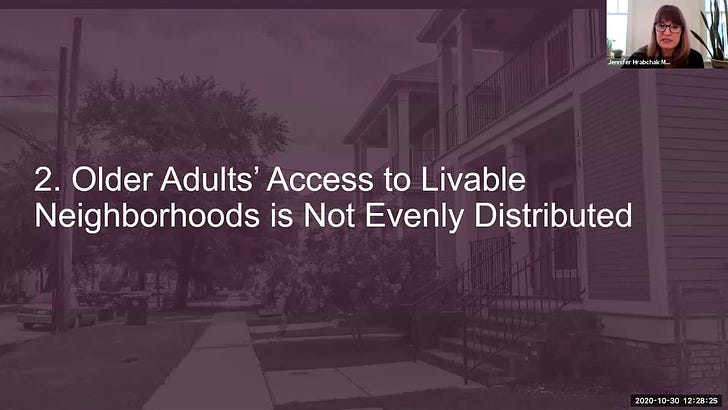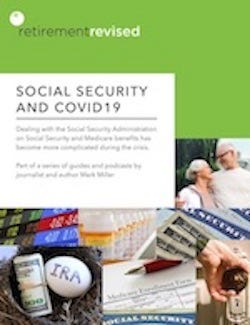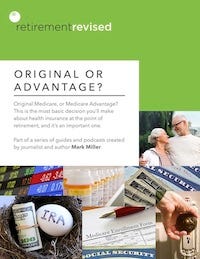Will your home be a good fit as you age?
A new report from Harvard and AARP contains disturbing findings
Most people say that they want to stay in their homes as they age. But successful aging in place requires some careful planning - and it’s not always the best choice. Issues to consider include the cost of maintaining your home, proximity to healthcare, family, recreation, leisure activities and transportation.
What’s more, a quiet crisis is looming as we face a major gap in the availability of livable, age-friendly communities as the nation gets grayer by the day.
What do I mean by livability? That’s the topic of a new report from the Harvard Joint Center for Housing Studies and the AARP Public Policy Institute. The report finds that most older adults don’t reside in livable communities, as measured by the AARP Livability Index, which identifies key aspects of the built, economic, and social environments that contribute to community and individual well-being.
The co-authors discussed the report during a recent webinar, which is available above - I think you’ll find it interesting. The speakers include Jennifer Molinsky and Whitney Airgood-Obrycki of Harvard, and Rodney Harrell and Shannon Guzman from the AARP Public Policy Institute. Also joining the discussion is Kathleen Otte, a regional administrator in the Administration for Community Living (part of the U.S. Department of Health and Human Services).
The AARP index is worth knowing about. It’s a rather cool online resource that you can use to evaluate any community in the U.S. (your own included) for livability as you age. You’ll see a total score, and you can drill down for details on seven key measures:
Neighborhood: Proximity to destinations, presence of mixed uses, and safety and quality
Transportation: Convenience, cost, accessibility, and safety of street.
Environment: Water and air quality, energy efficiency, and resilience
Health: Access to and quality of health care and healthy behaviors
Engagement: Civic and social participation, equal rights, as well as Internet access
Opportunity: Income equality, economic and educational opportunities, multi-generational communities, and local fiscal health
No surprise, the Harvard/AARP report points to significant differences between who has access to the country’s most livable communities. These differences depend on whether the resident is a homeowner or renter, whether they have a disability, and by race/ethnicity and income.
Renters and Asian older adults are more likely to live in high livability neighborhoods while homeowners, middle-income households, older adults with disabilities, and white older adults are more common in places of low livability. Shares of Black and Hispanic older adults hold steady across neighborhoods of all levels of livability.
The report also found that older adults who move are not relocating to more livable neighborhoods. Indeed, three-quarters of older adults who moved recently relocated to neighborhoods with roughly the same livability score as their previous location, with only 11 percent moving to more livable locations, and 14 percent moving to areas that received lower livability scores.
For more on living location and age, download my guide to aging in place (paid subscribers only).
Not a subscriber yet? Take advantage of a special offer
Sign up now for the free or subscriber edition of the newsletter, and I’ll email a copy of my latest retirement guide to you. This one looks at dealing with the Social Security Administration during the COVID19 crisis.
Customer service at the Social Security Administration has changed during the coronavirus crisis - the agency closed its network of more than 1,200 field offices to the public in March.
Just a reminder- subscribers receive the full edition of the newsletter (the free edition is abridged), and they have access to the entire series of guides at any time. Click on the little green button to subscribe, or go here to learn more.
Join me for a panel discussion on the future of retirement
I’ll be joining a panel discussion on the pandemic’s impact on the outlook for retirement within workplace plans a bit later this month, moderated by my Reuters colleague Lauren Young. Also on the panel are Christine Benz of Morningstar, economist Teresa Ghilarducci, Kedra Newsom Reeves of Boston Consulting and Harry Dalessio from Prudential Retirement.
The session will be convened on Monday November 16th at 1pm eastern time. Registration is free, and the conversation will be provocative, so please join us (register here).
Open enrollment: Original Medicare or Advantage?
Medicare’s open enrollment season is underway, and a key decision point is whether to use Original Medicare or Medicare Advantage. Premium newsletter subscribers can review my guide to choosing between Original Medicare and Medicare Advantage here.





